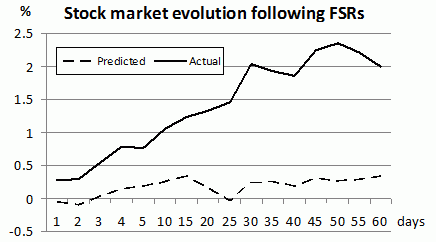Several arguments have been put forward for justifying why central banks are receiving a prominent role in macroprudential supervision: combining financial supervision with monetary policy tasks can lead to synergies and a more effective conduct of monetary policy (Borio 2009); it may be usefully connected to the central banks’ lender-of-last-resort function (Blinder 2010); or because central banks could benefit from incorporating systemic risk considerations in the monetary policy process given the costs of asset price bubbles (Feldstein 2010).
Yet assigning such a task to central banks has raised concern over numerous risks: it may at times lead to conflicts among different goals (Goodhart and Shoenmaker 2005, De Grauwe and Gros 2009); and it may be costly for the reputation of central banks if they fail in their macroprudential tasks, a point that was originally made in the context of microprudential tasks (Goodhart 2002), but is equally valid here.
What has been missing in this debate so far is evidence about whether, and under what conditions, central banks may actually be effective in guiding financial markets through their role in macroprudential supervision. In new research (Born et al. 2010), we attempt to address this question by exploiting the fact that many central banks have had some financial stability role in the past, and have communicated extensively on this through the publication of Financial Stability Reports (FSRs) and financial stability-related speeches and interviews.
Our research creates a novel database comprising more than 1,000 FSRs and speeches/interviews by central bank governors across 36 countries, and based on their semantic features, grades these along optimism and activity dimensions. In line with the aims put forward by Blinder et al. (2008), such communication is defined to be effective if the views that it contains get reflected in the markets; either by “creating news” – moving the level of asset prices – or by “reducing noise” – reducing market volatility and uncertainty.
A first striking finding from this classification is that the tone of FSRs had continuously become more optimistic after 2000, but reached a peak already in early 2006, and became more pessimistic thereafter (see Figure 1). This suggests that FSRs, across the 36 countries in the sample, may indeed also contain a forward-looking assessment of risks and vulnerabilities, which flagged a weakening financial stability environment already well before the start of the financial crisis in August 2007.
Figure 1. The evolution of optimism in Financial Stability Reports over time
Notes: The figure plots the median, 25th and 75th percentile of the optimism scores for FSRs in any given year.
Moreover, the empirical findings of this work suggest that communication about financial stability has important repercussions for financial sector stock prices. FSRs clearly create news in the sense that stock markets move in line with the views expressed in FSRs. This effect is quite sizeable as, on average, FSR releases move equity markets by 2% during the subsequent month, as shown in Figure 2, relative to the counterfactual. Another important finding is that FSRs also reduce noise, as market volatility tends to decline in response to FSRs.
Figure 2. Predicted versus actual evolution of stock markets after FSR releases
Notes: The figure compares the actual evolution of cumulated stock market returns (in %) following the release of FSRs to the predicted evolution on the basis of the benchmark model. The solid line plots the average actual cumulated returns starting from day 1 after the FSR release and up to day 60. The dashed line shows the expected cumulated returns that would result from the benchmark model in the absence of an FSR. The cumulated returns are multiplied by -1 for pessimistic FSRs, whereas they are left unchanged for optimistic FSRs.
By contrast, speeches and interviews are, on average, less effective instruments. In particular, while having only modest effects on stock market returns, they tend to increase rather than reduce market volatility (in particular during the crisis). However, the effectiveness of FSRs and speeches crucially depends on market conditions. Importantly, speeches by central bank governors were effective in guiding financial markets during times of financial stress. Moreover, the results indicate that financial stability communication of central banks influences financial markets primarily via a coordination channel, i.e. it provides relevant information which exerts a significant and persistent effect on markets.
How can we explain that FSRs overall reduce noise, i.e. lower stock market volatility, whereas speeches and interviews generally have the opposite effect? A crucial difference between these communication tools is that the release schedule of FSRs is typically pre-announced, whereas the timing of speeches and interviews is much more flexible. Given this flexibility, speeches and interviews might carry some surprise element, simply due to the fact that a governor feels compelled to raise financial stability issues in a speech or an interview. In contrast, due to the fixed release schedule for Financial Stability Reports, financial markets expect statements about financial stability issues on the release days. There might be surprising elements in their content, but the mere fact that the FSR is released does not come as a surprise. This difference might be at the heart of the different effects of the two instruments on market volatility.
The empirical findings of our new work raise a number of important policy issues. Communication on financial stability issues by a central bank with a macroprudential policy role will certainly be watched very closely by financial markets, and thus are potentially an important influence on financial markets.
Does this imply that central banks should limit transparency and their communication on certain macroprudential risks, as argued by Cukierman (2009), or does this make the case for enhanced transparency and accountability, as argued by others?
Our work underlines that communication by monetary authorities on financial stability issues can indeed influence financial market developments. Yet the findings also show that such communication entails risks as they may unsettle markets. Hence central bank communication on macroprudential issues needs to be employed with utmost care, stressing the difficulty of designing a successful communication strategy on financial stability.
This column presents the authors’ personal opinions and does not necessarily reflect the views of the European Central Bank.
References
Blinder, A (2010), “How Central Should the Central Bank Be?”, Journal of Economic Literature, 48(1),123-133.
Blinder, A, M Ehrmann, M Fratzscher., J de Haan, and D-J Jansen (2008), “Central Bank Communication and Monetary Policy: A Survey of Theory and Evidence”, Journal of Economic Literature, 46(4):910–945.
Borio C (2009), “Implementing the Macroprudential Approach to Financial Regulation and Supervision”, Banque de France Financial Stability Review No. 13, 31-41.
Born, B, M Ehrmann, and M Fratzscher (2010), “Macroprudential policy and central bank communication”, CEPR Discussion Paper 8094.
Cukierman, A (2009), “The Limits of Transparency”, Economic Notes, 38(1-2):1-37.
De Grauwe, P and D Gros (2009), “A New Two-Pillar Strategy for the ECB”, CESifo Working Paper No. 2818.
Feldstein, M (2010), “What Powers for the Federal Reserve?”, Journal of Economic Literature 48(1),134-145.
Goodhart, C (2002), “The Organizational Structure of Banking Supervision”, Economic Notes, 31(1):1-32.
Goodhart, C and D Schoenmaker (2005). “Should the Functions of Monetary Policy and Banking Supervision Be Separated?”, Oxford Economic Papers, 47:539-560








